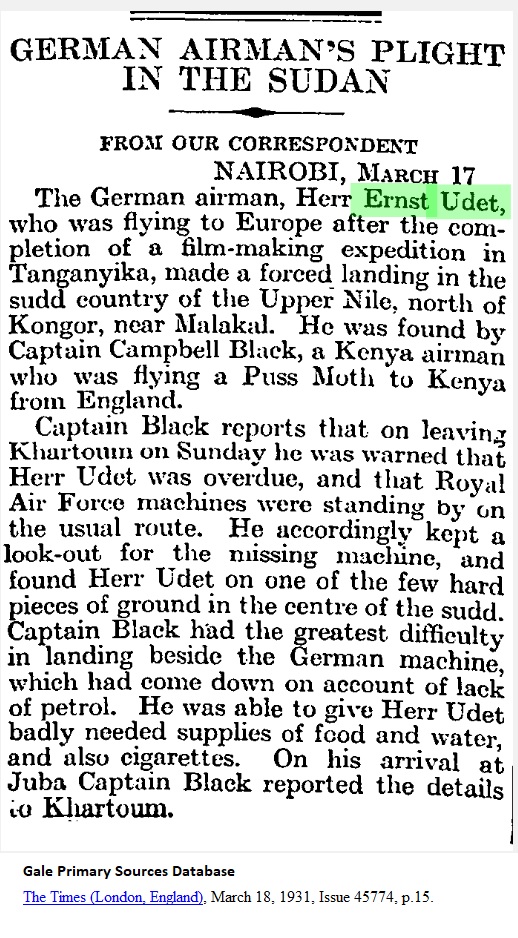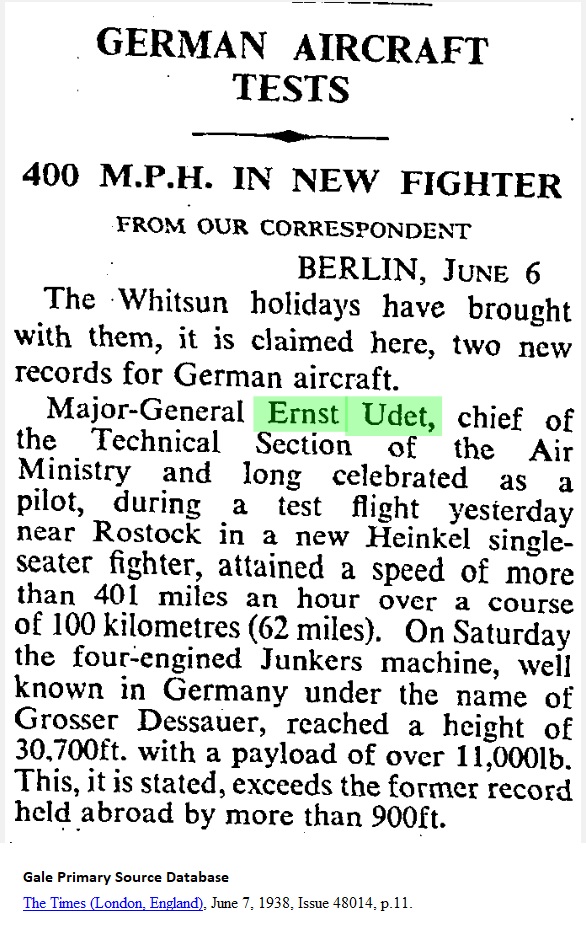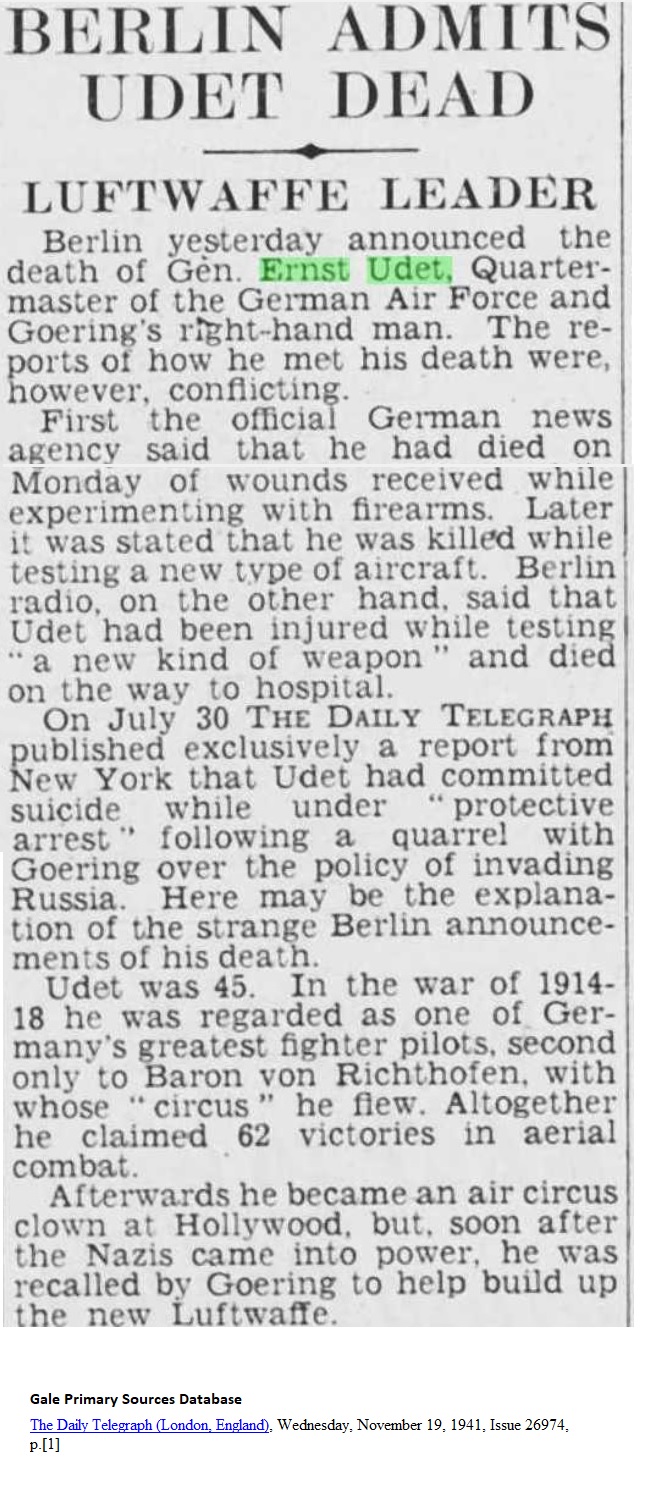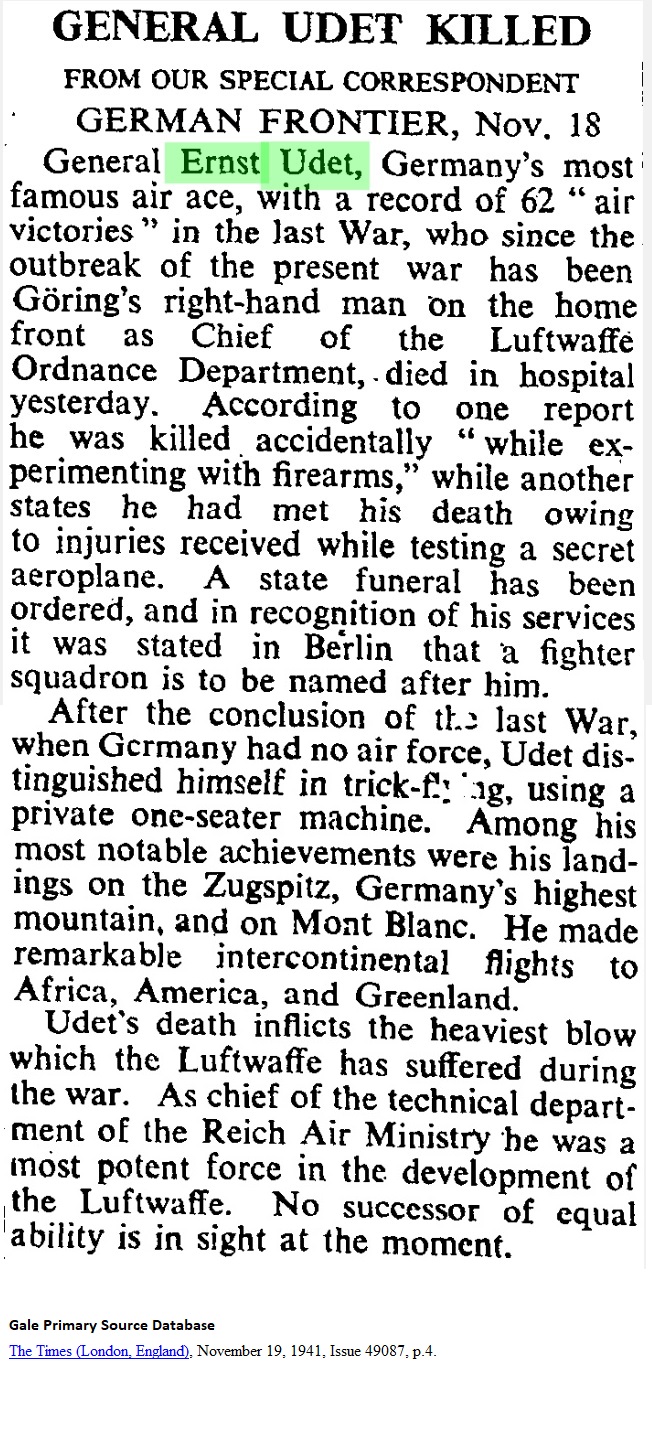
Syracuse Union January 22, 1932 page 7
_____
An Interview with Stunt Pilot Ernst Udet
"The memories which I bring back from the grand national American airshow in Cleveland belong to the most beautiful moments in my flying career. I experienced how aerial sports looks in a country that in no way is either imaginary or tangible. The evolution of aviation encompasses everything in order to constantly improve it as a worthy sport. Already the awareness, not bound by any rules or stipulations except for those which one observes in the interest of undisturbed traffic control and safety, is an incredibly fine feeling. No police asking for a log book, which one must produce at the start of a flight or at the point of arrival, no fees for takeoff or landing; in brief, to my mind, the ideal situation. Add to this in a country where one notices at every turn how ample material resources of all kinds are available along with the corresponding machinery to an extent one never hears spoken about in our country.
If we here are so far away from this ideal situation, it's not a reproach. One can say that our circumstances in comparison with those of lavish America also present an advantage because it forces us to compensate with the power of intellect when we're not in position to acquire the necessary materials. When I arrived in Cleveland from New York and acquired the materials with which I could enter the competition, it was somewhat daunting — I often feel that way — my trusty machine with its hundred horsepower engine, which I had been flying for six years, seemed almost puny compared to this grand international entourage. There was an Englishman with a five hundred horsepower Blackburn, a Pole with a four hundred, fifty horsepower Jagd one-seater, an Italian with a five hundred horsepower Curtis engine, and the Americans didn't lag behind. Of the 320 other machines present, around 200 were privately owned aircraft — proof of the large number of devotees of private aviation in America, the overwhelming majority of which exhibired excellent aircraft construction. When I watched the first meets my confidence grew substantially because I noticed that not only did the quality of the aircraft tip the scales but also the quality of the pilots. And then I was certain I could enter my old man.
People have often suggested our German stunt flying, and mine in particular, of being artistic or acrobatic shenanigans. There's nothing more incorrect, though I do admit, to the layman it must so appear. But behind this artistic gimmickry lies a well thought-out system which every fully-schooled aviator has mastered with an unconditional confidence in the control of his apparatus. It's achieved through an ever rising level of self control which allows the pilot complete mastery of his machine under every circumstance. A level of sensitivity has been achieved which evolved with almost infallible confidence in all eventualities. One gains utter dominence over every move, over every press of the finger; an advantage no aviator will underestimate. Only through such a system are we in the position to extract maximum performance from our somewhat antiquated machinery, when compared to the rest of the world, and our pilots. The ability to climb higher in our disparately weaker machines is significantly greater than that of the foreigners.
If I could depart from this international meeting with honors, I can only say, it was a victory of the system over the equipment. I noticed what advantages my little plane had over the colossal ones, the rapid speed and the great form, then noticed that everyone watching, close to 100,000 people (Laying it on a bit thick — The Editor) rapt and cheering, I reacted. Most of all they were enthralled by my landing with a feathered propeller, which I accomplished some four meters above the ground. No one else was able to do that with their heavy aircraft. It has been a triumph of absolute confidence with delicacy. When they called me "the best stunt pilot in the world" I must respond that we have a lot more of them here who are in a position to execute similar maneuvers. I don't consider myself unique. That the Americans and the other foreigners who had gathered there together received poorer instruction leads me back to the point that it's due to the system, this complete, consistent and progressive competency training of which they are unaware.
That doesn't mean I underestimate my foreign aviation colleagues. To the contrary, I can declare that the American people and those represented by other countries have command of excellent piloting skills even when you consider how very freely and unabashedly military and civilian aviation has developed. Even the advantages, which these highly developed machines offer, become a valuable part of the pilots' comprehensive knowledge and ability. I have been able to see so many airplanes there which have enchanted me, especially the exaggerated streamlined forms which give the machine a charming exterior. Above all else this new form offers the possibility of acccomplishing unparallelled speed, much greater than anything to which we are accustomed. This is also of huge significance for our airline flights because the greater the speed (naturally within limits of absolute safety) of our aircraft, the more we are able to establish air travel as a means of transportation.
When one considers that the daily attendance at the flight meet was around 100,000 people with only five policemen mounted on horseback and only one man was needed to arrange takeoffs (with almost 300 aircraft!) and not even a single collision or injuries occurred, one can gage how large the difference is between our circumstances and theirs. These days over with the Americans are not only unforgettable memories but packed with lessons on many levels. And it will be my future task to assess just how valuable these lessons are — to whatever extent I am able.













